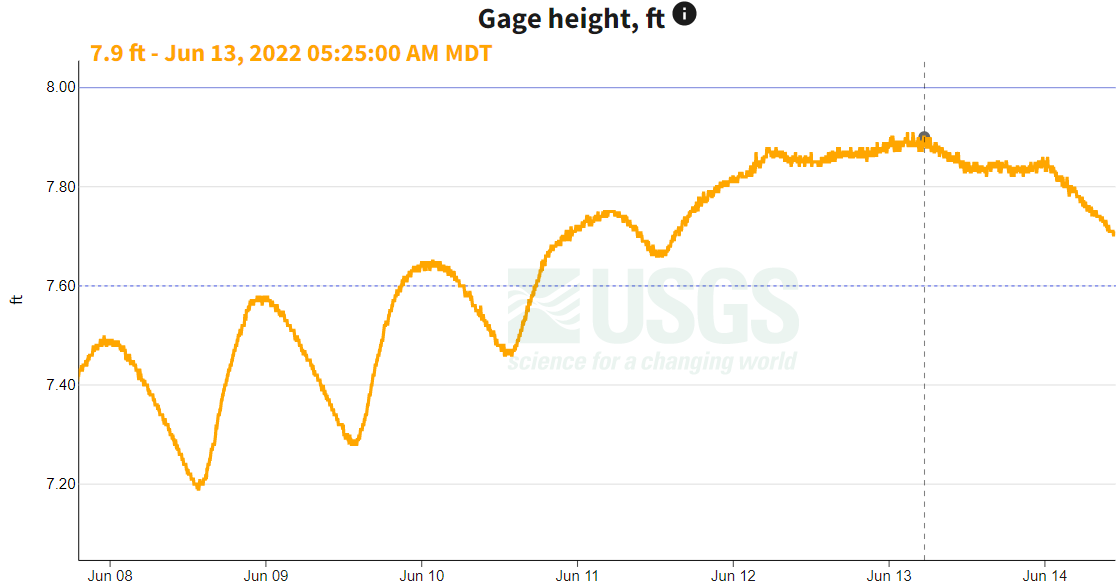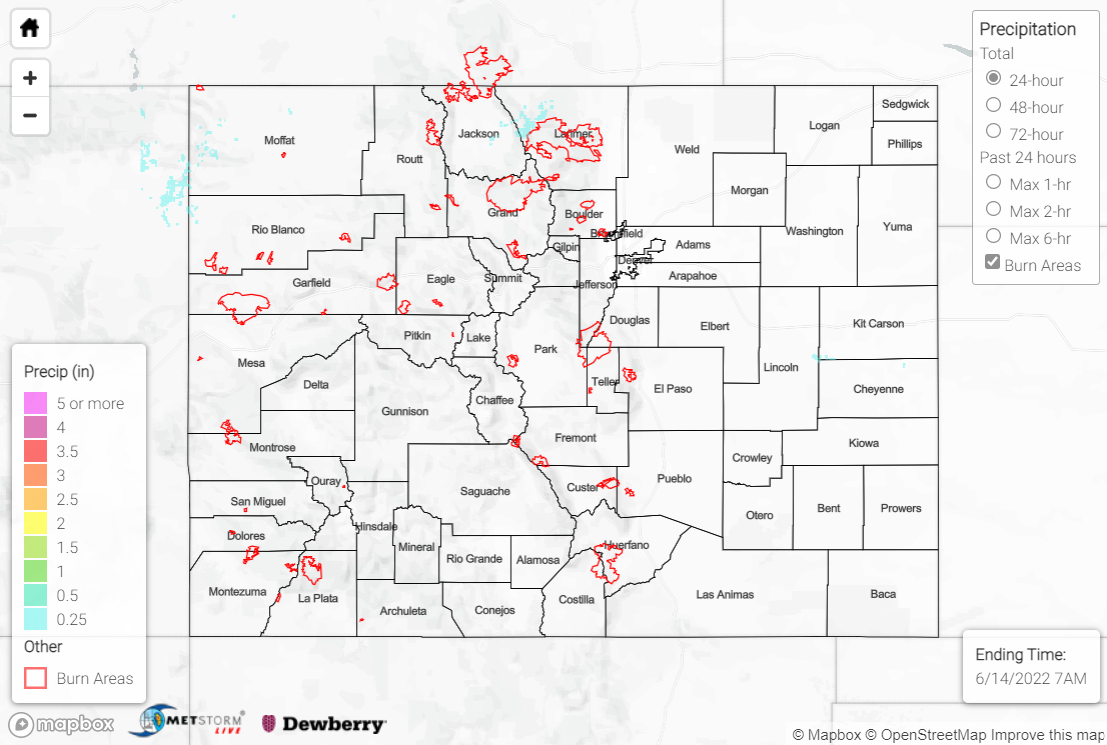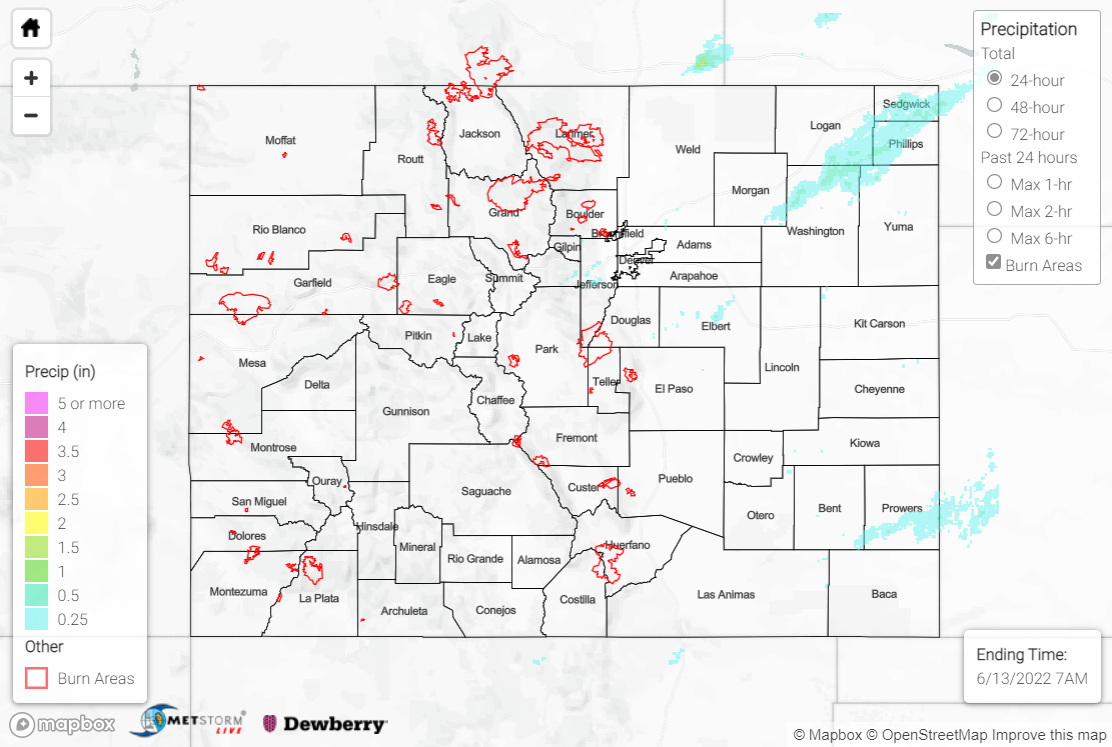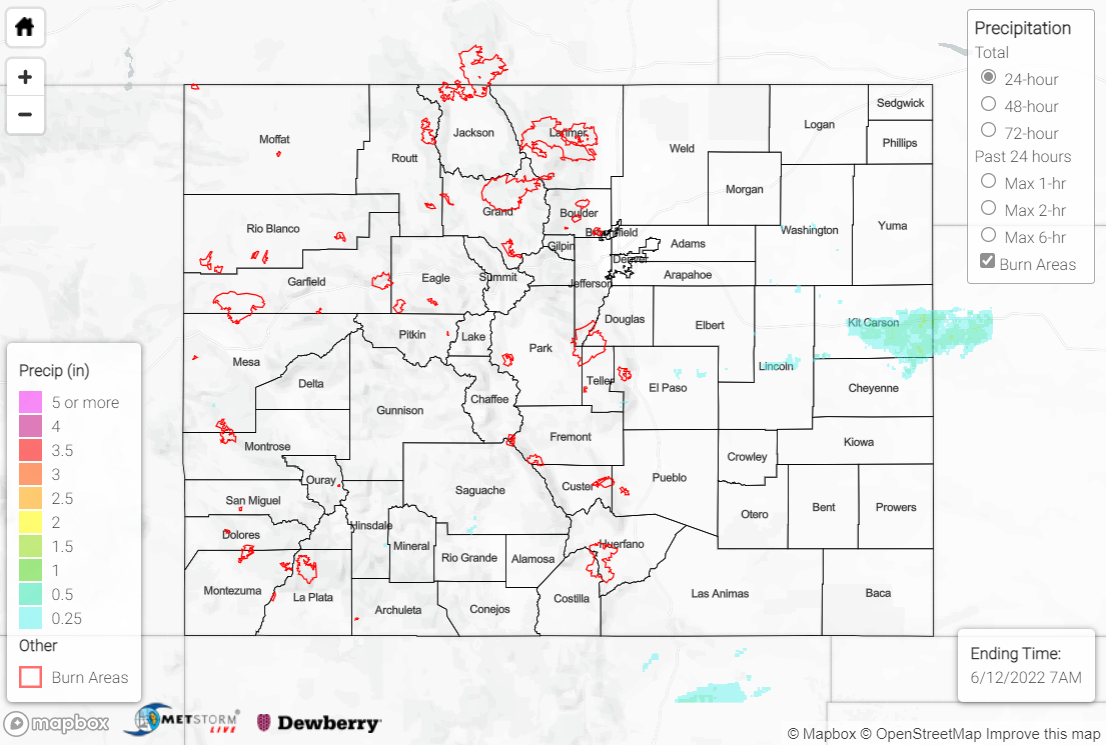Issue Date: Wednesday, June 15th, 2022
Issue Time: 10:30 AM MDT
Summary:
Cooler temperatures near seasonal norms were widespread across Colorado yesterday, making for a comfortable Tuesday after the record-breaking heat of late. Most of the state saw a fair amount of sunshine, as well.
Later in the day, a weak shortwave trough passing overhead led to a strengthening low-level jet atop a frontal boundary draped across the Southeast Plains. The nose (or terminus) of this jet was able to extend its way into the Northeast Plains, where some elevated instability led to showers and storms developing by late afternoon/evening.
Precipitation was mainly confined to the far Northeast Plains, where amounts 0.25-0.50” were observed under the more intense showers and storms. The highest rain gauge observation was 0.35” near Holyoke, although rain gauge coverage in this part of the state is sparse. QPE data suggests amounts closer to and exceeding 1.00” may have been observed at a few locations. No severe weather was reported.
Red Flag Warnings continued Tuesday for much of south and southwest Colorado, with low relative humidities and deep mixing producing gusty winds. Several non-thunderstorm wind gusts of 45-50 mph were reported west of I-25.
The Boulder WFO allowed the Flood Advisory for the upper reaches of the Colorado River and Tonahutu Creek in Grand County to expire early this morning, as water levels continue returning to normal. The high waters of the past several days prompted Rocky Mountain National Park to temporarily close at least one trail and several access roads on the Park’s west side, per Colorado Public Radio. Before reopening, the affected roads and trails will be evaluated for damage from the snowmelt flooding. Flows on several other creeks, streams, and rivers in the Northern Mountains, Central Mountains, and Front Range are also returning to normal.
There was no flooding reported yesterday. For precipitation estimates in your area, check out the map below.




